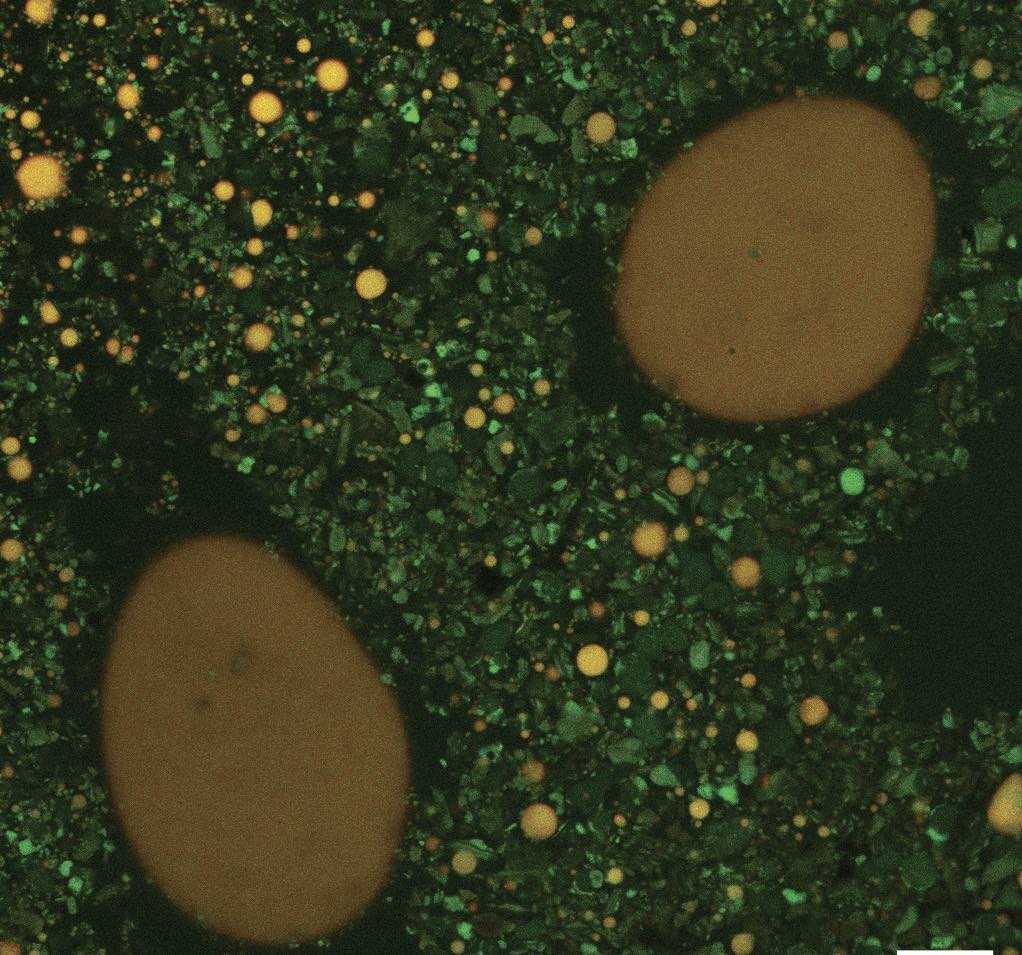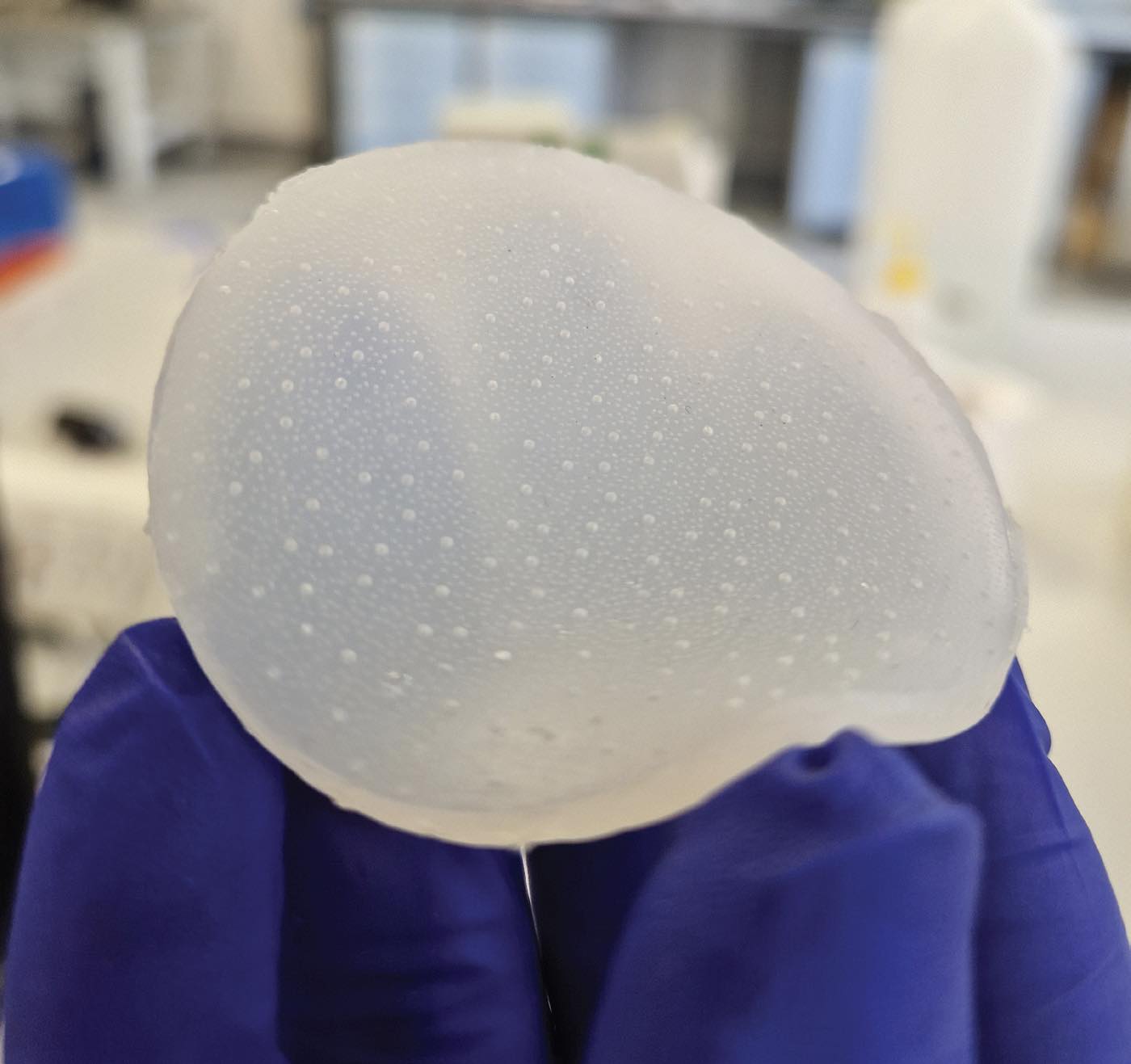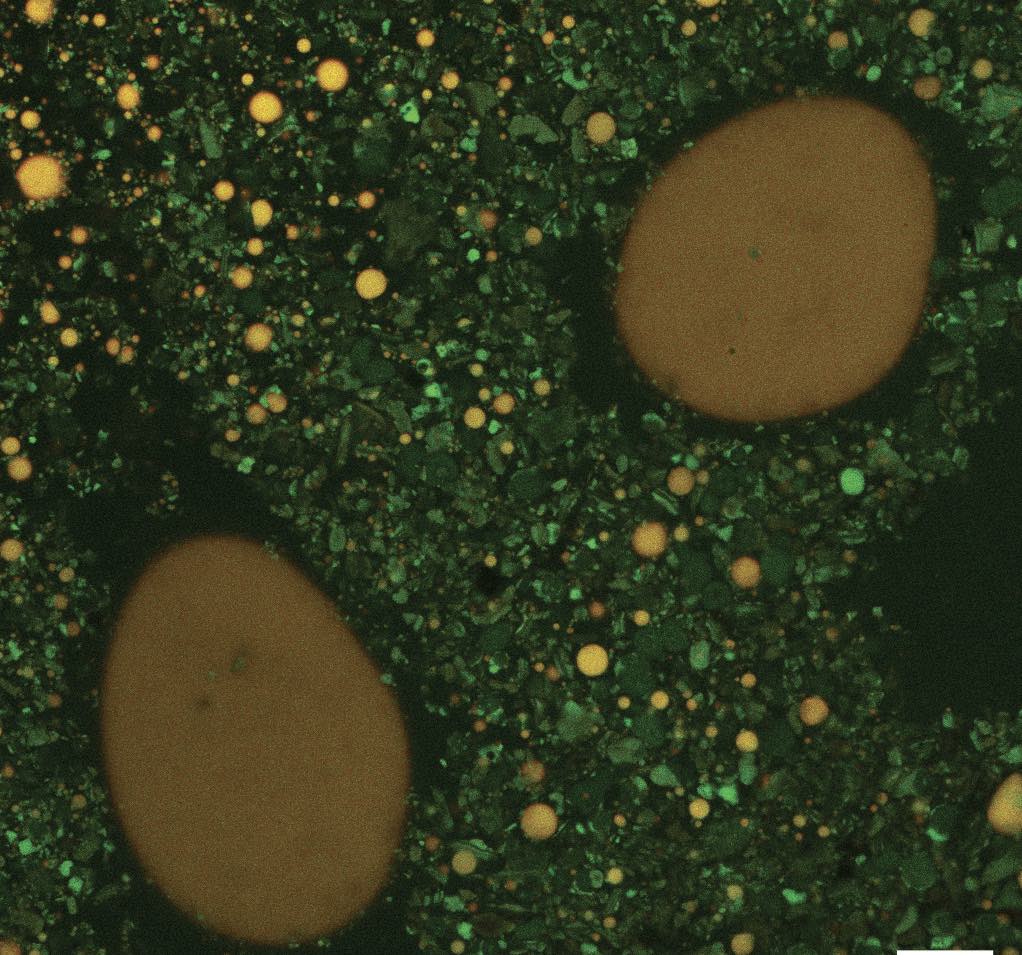Administration of the project
Tribology of eating chocolate
By Dr. Neil Canter, Contributing Editor | TLT Tech Beat August 2023
A three-fold increase in the coefficient of friction occurs during the oral processing of chocolate.
HIGHLIGHTS
• During the eating of chocolate, a phase change and an emulsion form, making the oral tribology very complex.
• A study was conducted with dark chocolate using a 3D biomimetic tongue-like surface that simulates the human tongue.
• In examining the transition from solid chocolate to an emulsion, the viscosity decreases, and the coefficient of friction increases, which may explain the gritty or sandy perception when eating dark chocolate.
For many of us, chocolate is a pleasurable food that is enjoyed in a number of different forms. This food contains suspended solid particles consisting of cocoa solid and sugar crystals in a crystalline cocoa butter.
Eating chocolate involves a series of steps starting with direct contact between an individual’s tongue and a solid piece of chocolate. This is followed by a phase change where the chocolate transitions from a crystalline solid to a molten fat phase that contains suspended particles of cocoa and sugar. The phase change is triggered as the chocolate melts when placed in an individual’s mouth. Saliva is then introduced as part of the digestion process to gradually dissolve the sugar crystals and make an oil-in-water emulsion.
Dr. Siavash Soltanahmadi, research Fellow at the University of Leeds in Leeds, UK, says, “Chocolate is a classic example of a phase change material (PCM) that can undergo a transition when exposed to heat generated by tribological stresses or from environmental factors (e.g., body temperature, etc.). Studying the oral processing of chocolate is done in a field known as oral tribology, which is very complex because of the presence of multiple phases (water and solid) and the transition of the solid to a molten state followed by emulsification with saliva. Mastication of chocolate moves eventually to an oil-in-water emulsion that contains 60% water (see Figure 1).”

Figure 1. When saliva interacts with chocolate, an emulsion is formed as is shown in this image of the microstructure after tribological testing. Figure courtesy of the University of Leeds.
Soltanahmadi considers the study of the tribology of eating chocolate to provide an opportunity to better understand how to develop healthier chocolate that can produce the same textural sensation. He says, “There is an opportunity to develop a chocolate with a lower cocoa butter (fat) content that provides the user with almost the same pleasure if a better understanding of the tribology of eating chocolate is achieved.” Soltanahmadi and his colleagues are now reporting on the evaluation of four commercially available chocolate samples.
3D biomimetic tongue-like surface
The researchers evaluated the chocolate samples by using a three-dimensional (3D) biomimetic tongue-like surface that simulates the topography, deformability and wettability of a human tongue (see Figure 2). The objective was to evaluate the lubrication mechanisms for dark chocolate starting at the solid lubricant stage and progressing through the phase transition to a molten form and then eventually to the preparation of an emulsion due to exposure to saliva.

Figure 2. The oral tribology of eating chocolate was studied using a 3D biomimetic tongue-like surface that simulates the topography, deformability and wettability of a human tongue. Figure courtesy of the University of Leeds.
Soltanahmadi says, “Dark chocolate was used in this study because it often has an unpleasant textural perception due to its grittiness, pasty characteristic and mouth coating. Each of the dark chocolate samples have different active contents, cocoa content, total fat and sugar percentages but the same solid particle size distribution.”
Testing was conducted at the two contact scales, which are meso (papillae) and macro (full tongue). Soltanahmadi says, “Papillae represent rough patches on the tongue and are needed to grip food during chewing or act as ‘touch’ sensors, and also contain taste buds. Three different types are present on the tongue.”
The researchers conducted bulk rheological measurements, scanning laser microscopy and used two tribometers to measure coefficient of friction at various stages of the eating process. One tribometer simulates the contact of a single papilla on a tongue with solid chocolate. The second setup, which is a rheometer-tribometer, evaluates the interaction between the full tongue and the roof of the mouth (palate).
At the initial stage of oral processing, the solid chocolate acts in the manner of a solid lubricant such as molybdenum disulfide. Coefficient of friction values at the initial licking stage were found to be in the 0.1-0.2 range. Once saliva is introduced, aqueous lubrication becomes the main mechanism, which leads to a three-fold increase in the coefficient of friction.
The fat content in chocolate has a direct effect on the coefficient of friction. Chocolates with higher fat content exhibit superior lubricity because fat contains boundary lubricity additives. As a result, higher fat containing chocolates appear to exhibit lower coefficient of friction values.
In particular, saturated fat also may inhibit the formation of an aqueous film of saliva leading to a better perception of mouthfeel during eating. Cocoa butter also impacts the eating process by hindering direct contact of coarse cocoa particles with papillae in the tongue. This results in a decrease in the viscosity and an increase in coefficient of friction as the chocolate phase transitions from a solid to a molten phase. This phenomenon also may explain the gritty or sandy perception when eating dark chocolate.
The creamy feel of eating chocolate may be due to entrainment of cocoa butter at high coefficient of friction values leading to the observation of a hydrodynamic lubrication regime. The high viscosities of chocolate are a key contributor to the establishment of surface separation as long as this does not result in giving a thick/pasty feeling when eating chocolate, which is not particularly favorable.
Soltanahmadi says, “The value of using tribology as a tool to better understand the textural behavior of chocolate offers the opportunity to develop an approach to design chocolate that is healthier to eat. We propose a multiscale tribology-informed smart design of chocolate where a gradient architecture is established with high fat content at the surface of the chocolate and limited fat in the bulk phase.”
Sufficient cocoa butter is present in the proposed design in the bulk phase to bridge cocoa particles and provide coalesced oil droplets at the contact interface when chocolate is mixed with saliva. This should reduce frictional stresses by hindering cocoa particles from directly contacting the tongue.
This study demonstrates how tribology can be used to help improve the sustainability of people in facilitating the development of healthier foods without sacrificing the experience found in eating them. Additional information can be found in a recent article1 or by contacting Soltanahmadi at [email protected].
REFERENCE
1. Soltanahmadi, S., Bryant, M. and Sarkar, A. (2023), “Insights into the multiscale lubrication mechanism of edible phase change materials,” ACS Applied Materials & Interfaces, 15 (3), pp. 3699-3712.
Neil Canter heads his own consulting company, Chemical Solutions, in Willow Grove, Pa. Ideas for Tech Beat can be submitted to him at [email protected].


Be the first to comment